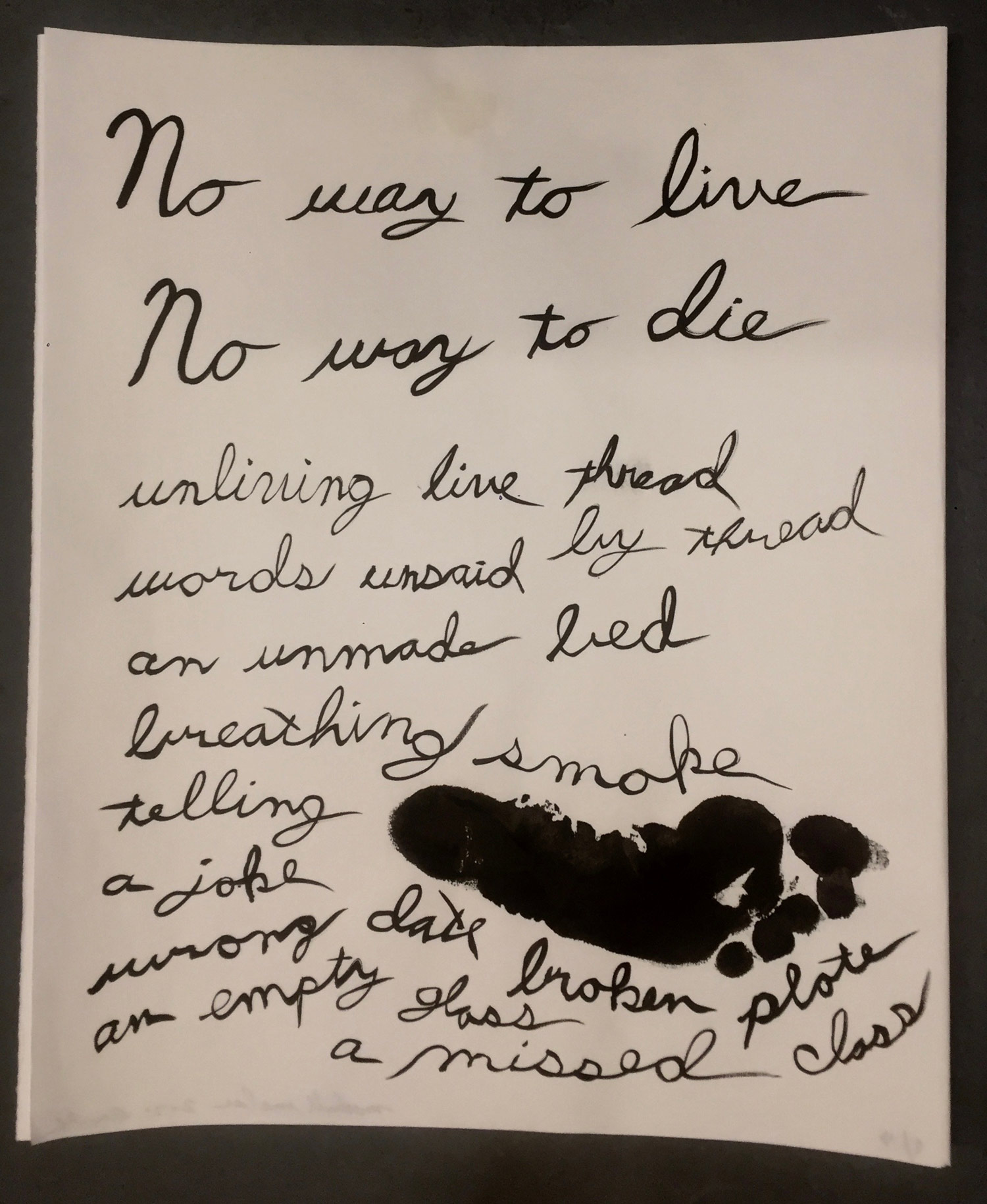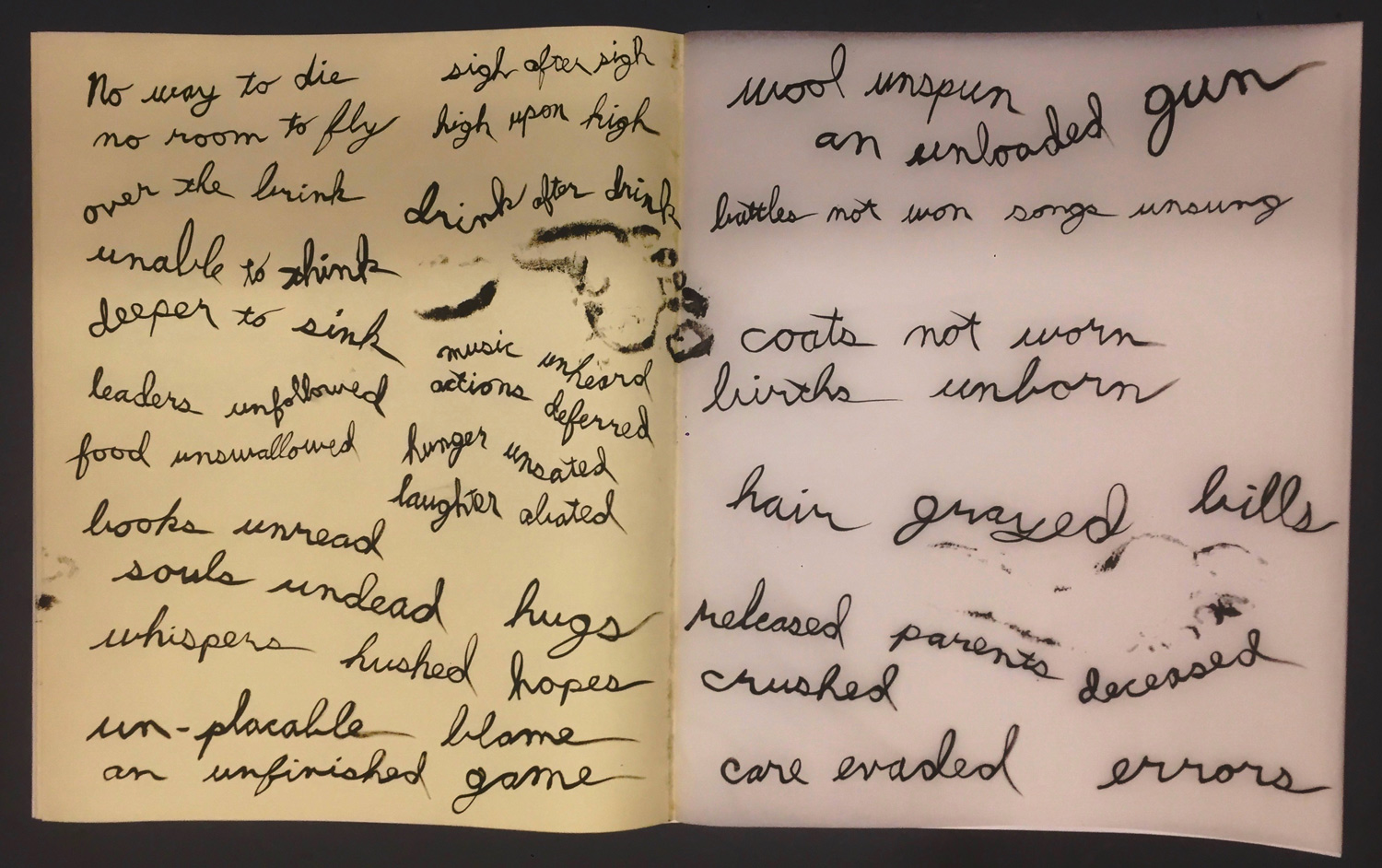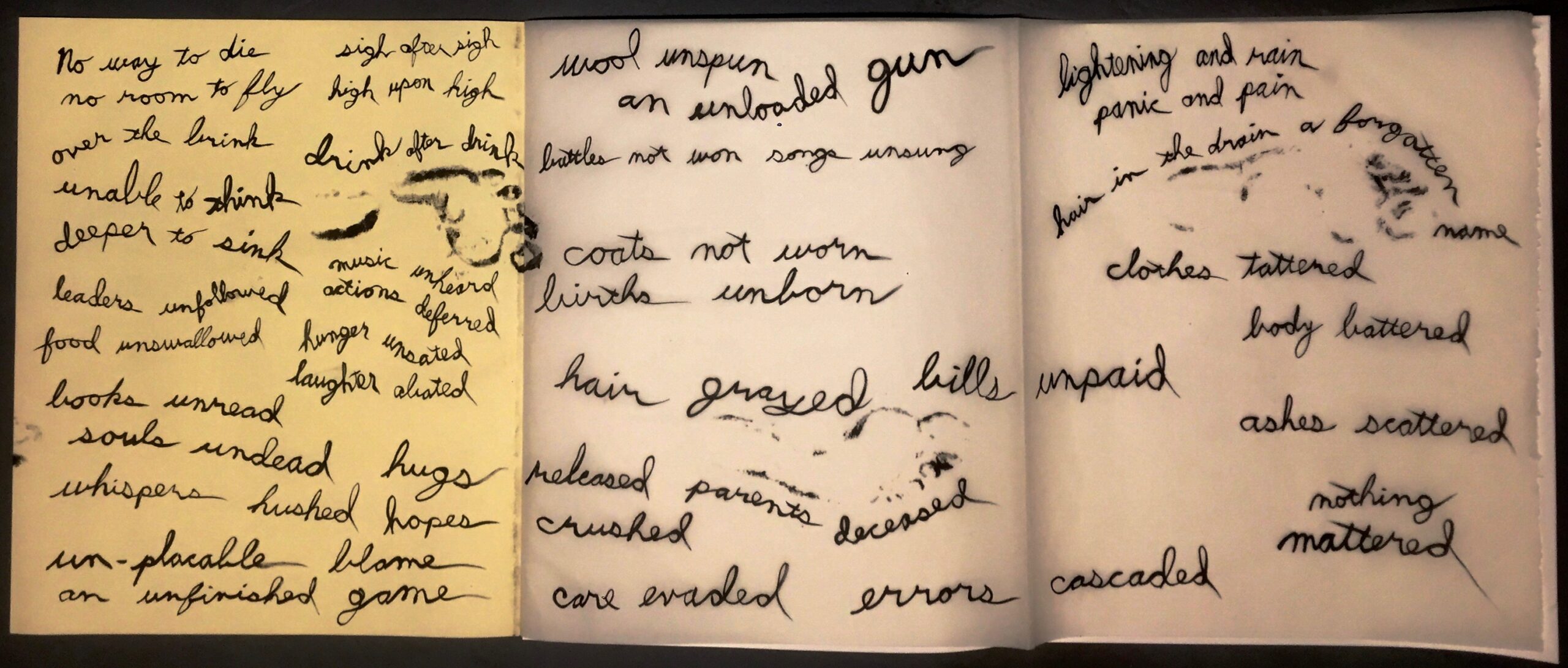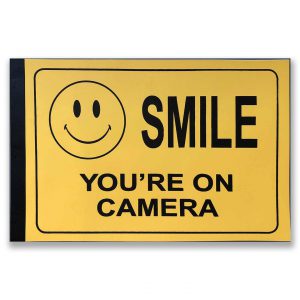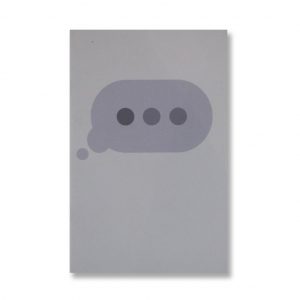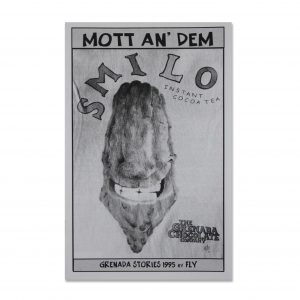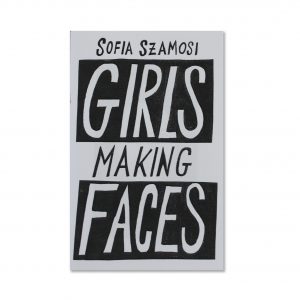No Way To Live/No Way to Die
No Way To Live/No Way to Die
Date
2020
Edition Size
4
Media
Calligraphy, Ink
Paper
Various 20th Century cotton and cellulose papers from the Bundesakademie vintage paper cabinet in Wolfenbüttel, Germany
Binding
Accordion
Pages
8
Location
Brooklyn, NY
Collection
Collection Development, Unique Books$ 2,800.00
Unavailable
View Collectors
School of the Museum of Fine Arts (SMFA) at Tufts
Dimensions: 28 x 22 inches, Pages: 8, Paper: Various cotton and cellulose 20th Century papers from the Bundesakademie vintage paper cabinet in Wolfenbüttel, Germany.
In the collection of W. Van Alan Clark, Jr. Library, School of the Museum of Fine Arts at Tufts University.
My closest friend struggled with health issues most of his life, like many others in 2020 he had the misfortune of urgently needing both mental and physical healthcare resources during the Covid 19 pandemic crisis. In part due to his irresponsibility, (magnified by mental health issues) and in part due to the lack of decent health care resources exacerbated by the pandemic, he died well before his time. I felt distraught for his friends and family but as I confronted my grief I also felt profoundly angry at him for cutting off the intense friendship and the creative relationship we had had most of our adult lives and had planned to continue well into the 21st Century.
No Way To Live/No Way to Die is the poem that was catalyzed by this circumstance. The creation of both the dyspeptic poem and its physical vehicle, the elegant book, functioned as a successful exorcism of my anger and was also an act of recuperative revenge that I feel certain my friend would have appreciated due to the sinister humor that we both shared. The character of the protagonist in the poem is a somewhat sordid amalgamation of the worst qualities of both myself and my friend.
The book exemplifies my unique practice of “calligraphic expressionism”, a type of ink brush calligraphy that combines traditional Chinese and experimental variants of Japanese Zen Buddhist and Arabic calligraphy. Instead of trying to follow any specific brush-painting or calligraphic form, after intensive meditation I try to inject the brush with my emotional energy and let that energy drive the letterforms so that the writing spontaneously expresses as much of my emotional state as possible.
The calligraphy in the book swirls around mono-prints of footsteps produced by 4 walking/mono-printing performances all titled “Ascension”. Due to the pandemic, these performances had to be done in isolation with no audience. The first manifestation of “Ascension” was canceled in 2016 due to some mental health issues I was having at the time. The second “Ascension” performance which was to have taken place in March of 2020 was canceled due to the Corona Virus pandemic. Finally, in October of 2020, I just decided to do the performance on my own at Booklyn’s studio. I didn’t tell anyone I was doing these performances which involved inking my feet with Sumi ink and walking on various scrolls and sheets of paper till the ink cleared my feet. This was an act of disappearing, an enactment of death, a depiction of the dismantling of my ego and identity, and an act of redemption via integration with nothing and everything. All very much in the spirit of isolation and personal crisis and reconsideration spurred by the NYC Lockdown of 2020.
Two videos of the “Ascension” performances are available here and here.
Collection of Tufts University Art Library


